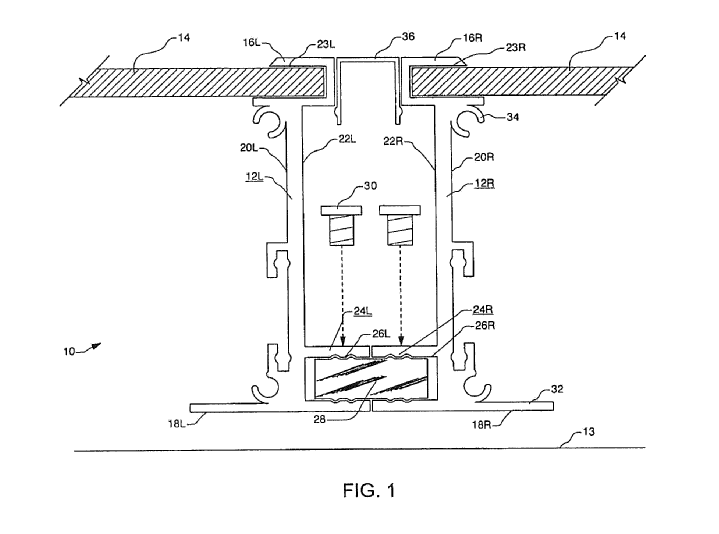Tesla Solar may have taken a step back from the limelight in recent years due to the electric car maker’s efforts to ramp the Model 3 sedan, but recent signs from the company indicate that it is now ready to start aggressively pushing its Energy business. Apart from high-profile projects such as the 50% expansion of the Hornsdale Power Reserve, Tesla also appears to be working on notable improvements to its residential solar system installation processes.
One such improvement was outlined in a recent patent application titled Method and apparatus for mounting photovoltaic modules. The patent describes a novel mounting system for photovoltaic modules that make them easier to install, maintain, and even remove if necessary. Tesla notes that its patent allows solar panel installations to be more aesthetically pleasing than traditional PV setups as well.
In its discussion, Tesla explained that solar panel installations are usually hit by a number of challenges, particularly in terms of alignment, grounding, wiring, rafter connections, and several other factors related to the mounting of the PV system itself. With this in mind, Tesla stated that there is a clear need for a PV module mounting system that is simple, cost-effective, and widely adaptable.

To address these challenges, Tesla has come up with an invention that utilizes an interlocking photovoltaic module mounting system. This design provides a “one piece, integrated photovoltaic module frame portion that is directly mountable to a support structure and interlocks with separate adjoining photovoltaic module frame portions.”
“A preferred embodiment of the invention includes an interlocking mechanism comprising at least one C-shaped channel portion on the outside surface of the PV module frame member with the opening oriented parallel to the plane of the substantially flat top solar cell covering, and which interlocks with an identical adjoining C-shaped channel portion of an adjoining PV module frame member through the use of a separate male coupling member which is inserted into the C-shaped portions of the two adjoining modules. The adjacent C-shaped channel portions do not overlap each other. The male coupling member may also serve as a means for providing electric ground continuity between PV modules,” Tesla wrote.
Such a system would offer a variety of benefits for Tesla and homeowners. Among these benefits include potentially faster installation processes, easier maintenance, and even simpler removal, to name a few. Utilizing the design outlined in Tesla’s patent, the electric car maker further explained that solar installations would look better, since the mounting systems provide no gaps between modules. Such a system will likely not make regular solar panel installations as attractive as, say, a Tesla Solar Roof installation, but it does allow for a very sleek overall look.
“The inventive system thus provides an interlocking, self-grounding, and self-aligning framing structure for each module, which provides three-dimensional adjustability, allows simple connection to the rafters, minimizes penetrations in the roof, allows access to wiring interconnects without removing modules, does not require expensive strut hardware, utilizes a non-overlapping, interlocking mechanism which allows for all PV modules in an array to rest in the same plane instead of having consecutive modules at slightly different angles due to the overlapping nature of an interleaved connection, and which in some embodiments allows removal of single PV modules from the middle of the array.
“The inventive system also provides an attractive appearance by having a low profile, with no gaps between modules, and no visible hold-downs or hardware, plus optional cosmetic flashings for screening visible edges of the array and optional cosmetic caps for covering the small gaps that may occur, or in one embodiment, for bridging between two adjacent PV modules to cover the wiring. Additional benefits are further described herein,” Tesla noted.
Promoting solar installations to homeowners is a key component of Tesla Energy’s business. And to gain an advantage in the residential solar market, Tesla would need to ensure that its PV installations are worthy of its premium brand while being cost-effective overall. Tesla’s electric cars are a cut above the rest of the market and thus, the expectations for its energy business are high. With such ideas as presented in this recently published patent application, it would appear that Tesla is actively exploring ways to improve its residential solar initiatives, even down to their mounting system.
Read the full discussion on Tesla’s innovative PV mounting solution patent here.

(adsbygoogle = window.adsbygoogle || []).push({});
<!–
–>
var disqus_shortname = “teslarati”;
var disqus_title = “Tesla patent reveals Solar module aimed at faster, more attractive installations”;
var disqus_url = “https://www.teslarati.com/tesla-solar-system-mounting-patent/”;
var disqus_identifier = “teslarati-121107”;

